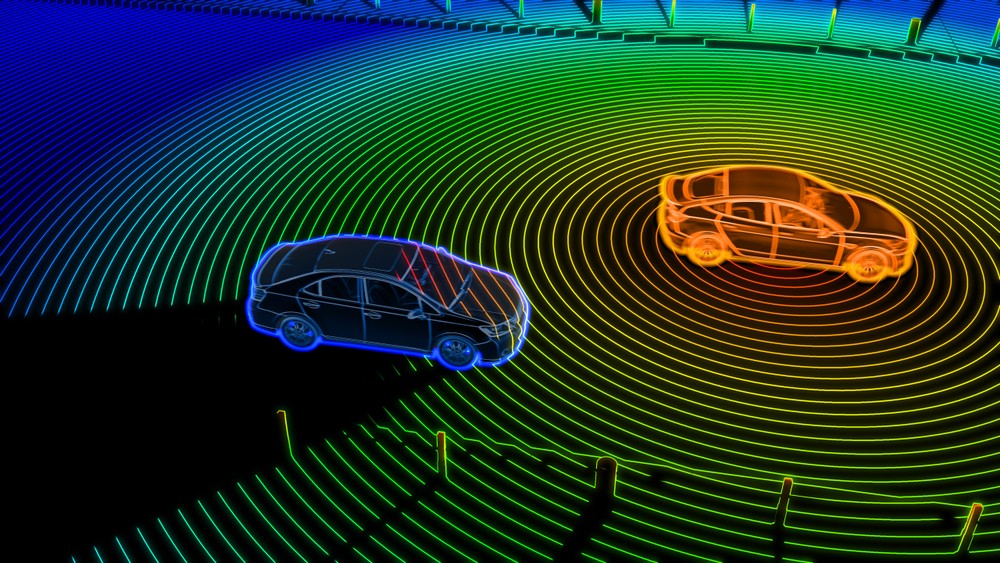As a driverless vehicle navigates its way through towns (as they are already doing in Las Vegas, Pittsburgh and Boston for example), they’re trained to soak in their surroundings by gathering and storing valuable information. Whether that’s data about the width of the road ahead, nearby vehicles, pedestrians crossing the street, or data on how the car is handling on a particular road surface and the speed being travelled at, it’s all useful information that will be critical to evolving the future of mobility.
It's no doubt that driverless vehicles are intelligent hubs for information and they are being forever defined by software which is generating huge amounts of data to feed its artificially intelligent (AI) algorithms – all crucial components for cars to function autonomously and safely without any human interaction needed. In just the blink of an eye (around a tenth of a second), connected vehicles are able to generate 15,000 pieces of data. This figure is expected to rise to 200,000 pieces of data each second by next year.
This vast amount of data presents a very real challenge, and indeed opportunity for the automotive sector as they look for new, innovative ways to handle, store and analyse all of this data. But before I delve into that, let me first set the scene with some history.
A brand new era
Do you remember what the cars of the 1950s were like? How could I forget the second-generation Chevrolet Bel Air! Now that really was a thing of beauty, with its Ferrari-like grille and chrome headliner bands. Despite its detailed, flawless exterior, it was the absolute epitome of simplicity on the inside—especially when compared to the electrical systems we have on board today. These vehicles didn’t collect data because they simply didn’t need to, they only ran on fuel. For cars back then, their sole purpose was to get you from A to B (in style). But how times have changed.
Twenty years ago in the 1990s, we saw the introduction of multiplexed networks to deal with the increasing amount of data. To keep pace with this, the architecture of vehicles started to evolve. After all, it is the architecture of a vehicle that defines the relationship between its software, hardware and computing power. Today, we are once again witnessing the evolution of vehicle architecture as we know it. This is to keep pace with the number of comfort, safety and environmental features being added into vehicles today which have become the new norm, not to mention the amount of sensors, actuators and electronic control units.
Did you know that inside today’s passenger cars the electrical and electronic architecture is the third heaviest system? Only the chassis and powertrain are heavier than this. Today’s autonomous driving era requires more than just a few slight adjustments to the architecture, it needs a complete overhaul to accommodate the needs of today’s vehicles. Outdated models don’t have the capacity or great computing power needed to run the vehicle’s complex software algorithms, and their legacy networking infrastructure cannot keep up with the ever-increasing data transmission speeds. And therein lies the industry challenge.
Big Data: The driver for autonomous cars
It’s important that smart vehicle architectures are able to prioritise data and communication protocols to accommodate the influx of data autonomous vehicles are gathering. Big data is fundamental for the development of safer, more intuitive, driverless transport systems that will transform the way we get from one place to another. To achieve this, engineers must first train the artificial intelligence algorithms that enable the car to drive itself, before any autonomous vehicle is able to safely make its way around on a road. Currently, this data is being collected from a whole host of sensors around the car to monitor its surroundings, such as GPS receivers and short-range wireless network interfaces to connect with the infrastructure to gain information about traffic lights, road conditions and to exchange information with other vehicles around. These sensors store and process the data to teach the vehicle different, real-life driving scenarios and how to react in each one of them. All data is fundamental in helping AI recognise hazardous objects on the road, when to notify the driver of imminent mechanical problems and how to interact with other cars on the road, for example.
The AI enabling autonomous vehicles must be fully trained on the diversity of situations the vehicle could experience – this is very important in order for the vehicles to get a more realistic, human-like view of the world. This process could potentially involve familiarising AI with millions or even billions of hours of driving data to ensure that the AI can identify everything from emergency vehicles, pedestrians and animals running across the road, to construction sites, street signs and traffic light systems. The key rule to remember with autonomous mobility is the larger the amount of big data the vehicle can collect, the greater the opportunities for autonomous technology to learn and get better to revolutionise driving as we know it today. It is important to note that these components go hand in hand and cannot be isolated.
The move to autonomous vehicles
During the time it’s taken for you to read this whole article, an autonomous car of today has already collected over 45 million pieces of data to feed its complex AI algorithms. It’s no question that the future of autonomous mobility hinges on a complete overhaul and re-architecture of the nervous system of a vehicle. The future smart vehicle architecture will be one that will deliver a fast, safe and reliable distribution of data and power. The automotive players that are able to get it right and execute this successfully, will be the ones that come out top in developing the world’s first safest, fully-autonomous vehicles that will change the way we get from A to B for the better.
[END]




